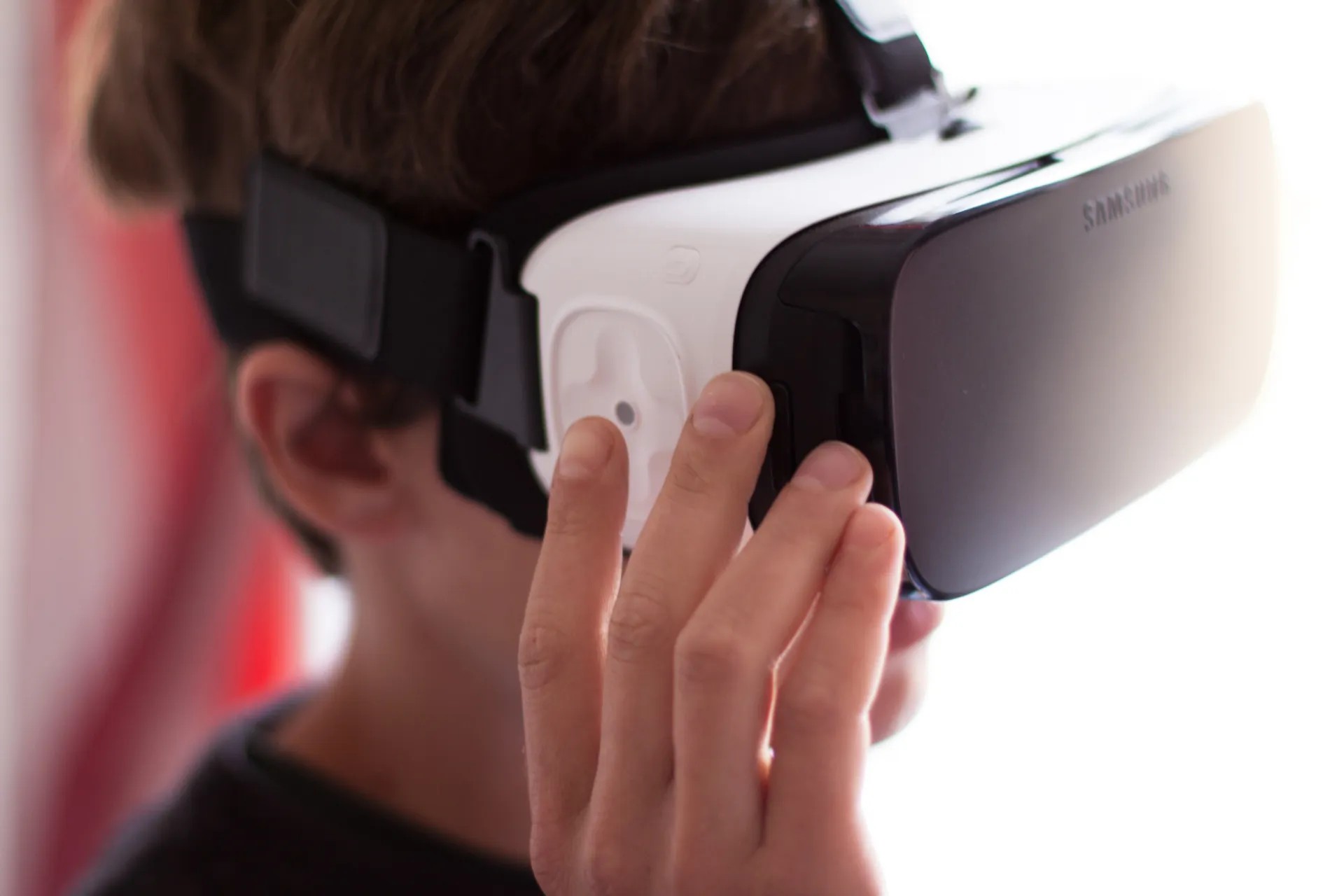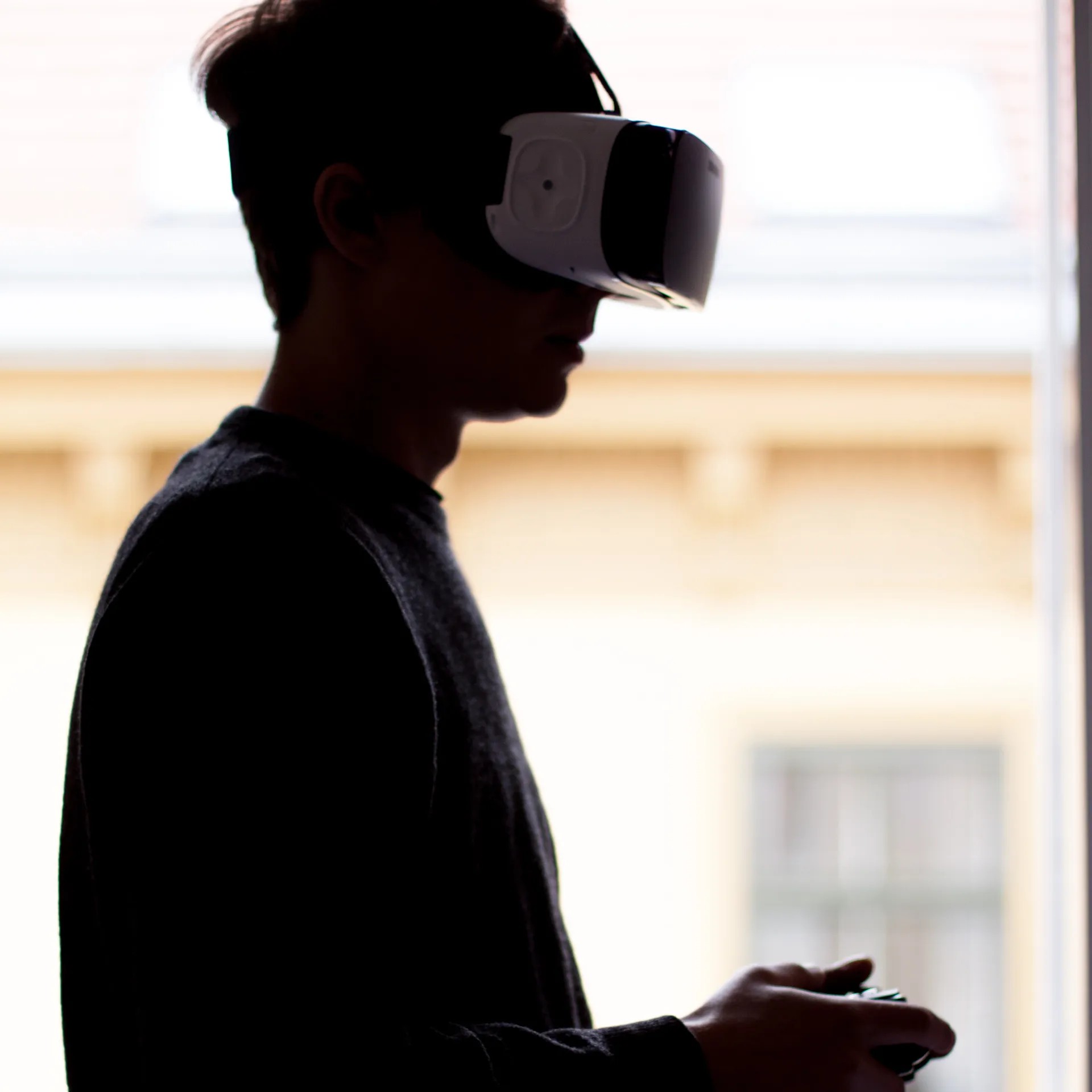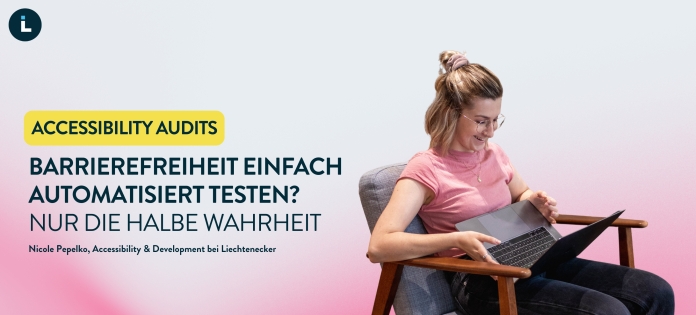A couple of weeks ago my colleague Stephan showed us where VR came from, how it works, and what its possibilities may be. Today, I want to focus on actually using VR, show good and not-as-good examples of VR-Technology and talk about getting started creating content for VR.
First impressions
I got my Samsung Gear VR a couple of weeks ago and my first impression was: okay, the pixel density of 577 ppi of the Galaxy S7 is not as crisp as I would need it to be to fully fall into the alternate reality. Luckily, I got used to the resolution and now I can enjoy using it. The movement of the head is tracked very accurately and smoothly, the touchpad on the side works well, although it’s a bit inconvenient to have your hand on your VR device all the time to navigate through virtual worlds, but more on that later.
My first step was viewing 360° photos which is a really nice experience to really be in the scene. Watching 360° videos can be a bit frustrating: You won’t be able to see everything that happens. You turn around and loose track of what’s going on behind you (and, what’s actually surrounding you in the real world, so be aware of chairs and tables as they may harm you!). And it can get really scary when you turn around and something’s happening suddenly right in front of you. A good example for a thoughtful 360° movie is the sneak peek of „Invasion!“. The short movie has very limited characters (altogether: 4, but not at the same time) and limited and consecutive actions. Audible triggers (such as the sound of an eagle) lead the viewer to the right direction. It’s a clever and important use of binaural audio and 360°-video. Also, there’s no movement of the camera, which helps avoiding motion sickness (which can become quite unpleasant watching e.g. a 360° video of a rollercoaster ride).
Navigation
360°-movies aren’t the lean-back-experience as normal movies are, but they are still quite straightforward. When it comes to other apps, e.g. games, the way of navigating is crucial.
Using the built in touchpad of the Samsung Gear VR
As I mentioned earlier, the touchpad on the side of the Samsung Gear VR is working, easy to use but not really convenient. It feels terribly wrong to dive into a new reality while holding your hand constantly besides your temple. Google Cardboard’s way of navigation is to point the reticle (which is in the middle of the viewport) to the selectable object and then wait a bit to confirm. That way you don’t need to push buttons on your VR-Device (since Google Cardboard does not have any, this seems a good idea), but it also doesn’t feel naturally to stare at things to activate them. VR is all about the freedom of experiencing the all-arround-you-environment, so making you to stare for more than a second at one exact point, is kind of foiling the VR itself.
Luckily, there are bluetooth gamepads for Android devices. Apps don’t necessarily support them, but most of them do and some actually require them. It may seem old-fashioned to use a handheld gamepad (developed in the 70s of the last century) while diving into the virtual reality of the future, but it works like a charm. Since most of us are familiar with gamepads, using them feels more natural than the formerly described ways of navigating. Especially when there’s a need to move, the gamepad is way more convenient than the „point-and-click“-like starring-navigation. One of my favorite games, a kart race game, makes use of the gamepad and creates an immersive experience. The kart is fully navigated by the gamepad, the reticle is only used for aiming special weapons and — if you don’t have weapons — makes it possible to enjoy the view.
Using a gamepad is a good way to improve the experience
New input devices will evolve and help to make the VR experience better. Nevertheless, the UI has to change and action must be easier to access than on mouse- or touch-driven interfaces.
As Vincent Munoz, Lead UX / UI Designer at Beloola, states:
Moreover, interacting with a UI is very tedious with a reticle. The view is less accurate compared with a mouse or a tap on a touch screen, and it requires basic skills to properly aim at elements.
Creating content for VR
Content for the VR can either be photo/video or applications. Videos require a special hardware for shooting, because the whole area has to be shot at once. There are camera systems that are tied together to provide the needed 360° field of view. Another option are rigs, where you can put in multiple cameras, e.g. GoPro. Then there’s the need of stitching the separate videos together to get on 360° video instead of e.g. 6 wide-angle video clips of 6 GoPro cameras. There is software like Kolor Autopano to do that. The publishing of the 360° video is not as comfortable as just uploading a normal video. Youtube hosts 360° videos, but in order to be able to upload them, you have to add special metadata, which can be done with an app provided by Google.
To create an application you need to choose your weapon first. You can do it from scratch, but using a 3d game engine will save you from a lot of headaches. A good choice could be Unity, which is a very powerful game engine that has built in support for VR, Android and iOS which comes in very handy when developing a VR app. As a game engine it provides a feature-rich environment with all we need for a smooth and beautiful VR app. But more on that in a while. We are exploring and we are excited, are you too?
Du willst mit jemanden über das Thema plaudern?
Einen kostenlosen Termin mit CEO Susanne vereinbaren!Barrierefreiheit einfach automatisiert testen? Nur die halbe Wahrheit
Für viele Unternehmen ist digitale Barrierefreiheit mittlerweile Pflicht – sei es aus gesetzlichen Gründen (Stichwort: BITV, WCAG, EAA) oder aus unternehmerischer Verantwortung gegenüber allen Nutzer:innengruppen. Doch der Weg zu einer barrierefreien Website oder Anwendung beginnt oft mit einem Accessibility Audit. Und genau hier warten die ersten Hürden.
Jetzt lesenEpisode #9 mit Oliver Schöndorfer
In dieser Folge zieht uns Oliver mit seinem unbändigen Enthusiasmus in die Welt der Schriften hinein. Jede Website schaut mittlerweile gleich aus? Keine Ausrede mehr; die Schrift ist die Stimme deiner Marke, mach was draus!Willkommen zum [...]
Jetzt anhören







